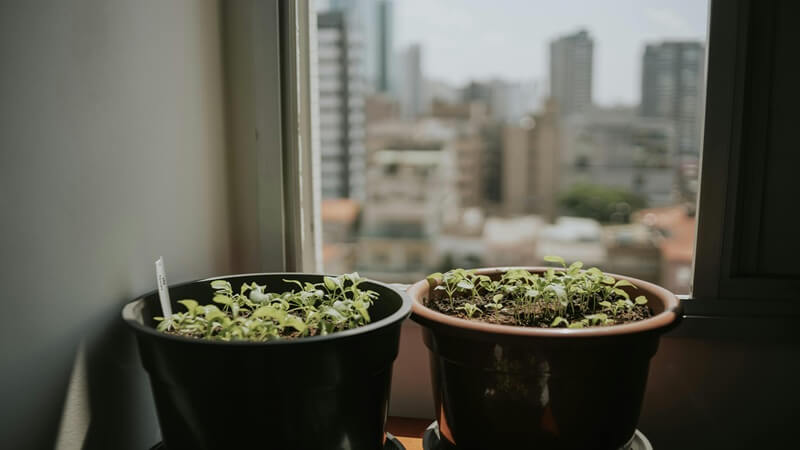Do you sometimes feel like the air in your home just isn’t as fresh as it should be? Whether it’s allergens, pet dander, dust, or simply musty air, many people deal with indoor air that feels heavy or uncomfortable. Thankfully, you don’t need a major renovation to make a difference. Small changes can go a long way in creating a healthier space—especially in humid and pollen-heavy areas like Canton, GA. In this blog, we will share smart, easy upgrades that can help you breathe easier at home.
Switch to High-Quality Air Filters
Changing your HVAC air filters might seem minor, but it plays a big role in your home’s air quality. Many standard filters only trap large dust particles, allowing smaller allergens like pollen, pet dander, and mold spores to keep circulating. Upgrading to a high-efficiency filter, such as a HEPA or MERV 13 filter, can trap much smaller particles. These filters are especially helpful for people with allergies or asthma, as they remove pollutants that can trigger symptoms.
Another benefit of better air filters is that they keep your HVAC system cleaner, which helps it run more efficiently. Cleaner ducts and coils mean less dust is being blown around your home. Make a habit of replacing filters every one to three months, depending on your household needs. Homes with pets or residents with respiratory conditions may need more frequent changes.
Invest in Professional Duct Cleaning
Many people overlook their air ducts, but they can collect a lot of dust, debris, and allergens over time. This buildup can then get blown into every room when the system runs, reducing air quality without you realizing it. If you live in an older home or haven’t had your ducts cleaned in years, it may be time to call in a professional. For residents seeking duct cleaning in Canton, GA, hiring a local expert can help clear out the grime and improve airflow throughout your home.
Duct cleaning removes dust, pet hair, mold spores, and even insects that may be hiding in your ventilation system. It’s a one-time upgrade that can make a big difference in how fresh your home feels. After cleaning, you may notice less dust on surfaces, easier breathing, and even improved energy efficiency. Combined with regular filter changes, this step can significantly boost your home’s air quality.
Use an Air Purifier in Key Rooms
Air purifiers are helpful tools that can clean the air in specific areas of your home. They work well in bedrooms, living rooms, or anywhere you spend a lot of time. A good purifier with a HEPA filter can capture small particles that your regular HVAC system might miss. This includes smoke, pollen, pet dander, and even some bacteria and viruses.
For best results, choose a purifier that fits the size of the room you plan to use it in. Some models also come with activated carbon filters that help reduce odors from cooking or pets. If you have allergies or live with a smoker, a quality air purifier can help you breathe easier and sleep better. Keep in mind that filters should be changed regularly for the unit to stay effective.
Add More Houseplants
Houseplants do more than make your home look nice—they can help clean the air, too. Some plants naturally filter out toxins like formaldehyde, benzene, and carbon monoxide. While you shouldn’t rely on plants alone to purify air, they can be a great supplement to other upgrades. Spider plants, peace lilies, and snake plants are low-maintenance options that thrive indoors and improve air quality.
Plants also increase humidity slightly, which can be helpful during dry seasons. Too much dry air can irritate your nose, throat, and skin. By adding a few plants around your living space, you not only get cleaner air but a more calming, natural environment. Just be sure to avoid overwatering and check that your plant choices are safe for pets if you have them.
Reduce Indoor Humidity with a Dehumidifier
High humidity can make your home feel stuffy and encourage mold and mildew growth. This can lead to unpleasant smells and breathing problems, especially for people with asthma or allergies. A dehumidifier helps keep moisture levels in check, especially in basements, bathrooms, or laundry rooms. The ideal indoor humidity level is between 30% and 50%.
Using a dehumidifier in damp areas can stop mold before it starts and keep allergens under control. Many modern models come with digital settings that allow you to set your preferred humidity level. They’re quiet, energy-efficient, and easy to move from room to room if needed. Reducing moisture not only helps you breathe easier but also protects your home’s structure over time.
Switch to Non-Toxic Cleaning Products
Many common cleaning products contain harsh chemicals that release fumes into the air. These can irritate your lungs, especially if you clean often or use sprays and bleaches in small spaces. Switching to non-toxic or natural cleaners can lower the amount of chemical residue in the air. Look for products labeled as “green,” “plant-based,” or “fragrance-free.”
You can also make your own cleaners using simple ingredients like vinegar, baking soda, and lemon juice. These homemade options are effective for everyday cleaning and are much safer to breathe in. If you do need to use stronger chemicals on occasion, make sure the room is well-ventilated and that you leave windows open if possible. Over time, your home will feel fresher and healthier.
In conclusion, improving your home’s air quality doesn’t need to involve expensive renovations. With just a few thoughtful upgrades, you can make a noticeable difference. These changes help protect your health, especially if you deal with allergies, asthma, or general fatigue from poor indoor air. Think about which changes make the most sense for your home and start there. Over time, you’ll likely feel the difference in how your space smells, feels, and supports your comfort. Breathing easier starts with simple choices—and those choices can have a lasting impact on your daily life.
